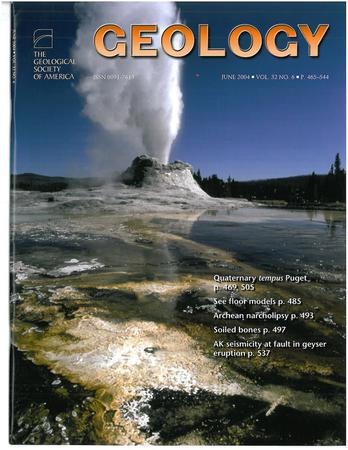Fluvial response to Late Pleistocene−Holocene climate change in the Colorado River drainage, central Texas, USA
IF 4.8
1区 地球科学
Q1 GEOLOGY
引用次数: 1
Abstract
We documented the impact of Late Pleistocene−Holocene climate change on terrace deposits and preserved channels in the unglaciated drainage of the Colorado River in central Texas (south-central United States) using integrated channel morphology and provenance analysis. Detrital zircon (DZ) U-Pb ages (n = 1850) from fluvial terrace deposits and new quantitative analysis of fluvial channel morphology based on LiDAR data were used to reconstruct sediment provenance and shifts in paleohydraulic conditions during Late Pleistocene to Holocene aridification. These data reveal a reduction in fluvial channel size and discharge temporally coupled with a rapid shift in erosion locus and dominant sediment sourcing, from the Southern Rocky Mountains to the Llano area, during the glacial-interglacial transition. Geomorphic mapping and morphometric analysis show narrowing of river channels linked to diminishing Colorado River discharge. DZ data show an abrupt shift to erosion in the lower drainage basin and the remobilization of older terraces due to river incision and lateral channel migration. We attribute these systematic changes to upper-basin contraction caused by drainage reorganization and aridification during the Late Pleistocene, as well as the onset of enhanced convective precipitation sourced from the Gulf of Mexico, driving focused erosion along the topographic edge of the Llano uplift in central Texas since the early to mid-Holocene.美国得克萨斯州中部科罗拉多河流域对晚更新世-全新世气候变化的河流响应
我们通过综合河道形态和物源分析,记录了晚更新世-全新世气候变化对德克萨斯州中部(美国中南部)科罗拉多河未冰川流域阶地沉积物和保留河道的影响。利用河流阶地沉积物中的碎屑锆石(DZ)U-Pb年龄(n=1850)和基于激光雷达数据的河道形态新定量分析,重建了晚更新世至全新世干旱化期间沉积物物源和古水力条件的变化。这些数据显示,在冰川-间冰过渡期间,从落基山脉南部到利亚诺地区,河道大小和流量在时间上有所减少,同时侵蚀位置和主要沉积物来源也发生了快速变化。地貌测绘和地貌测量分析显示,科罗拉多河流量减少导致河道变窄。DZ数据显示,由于河流切割和横向河道迁移,较低流域的侵蚀和较老阶地的再活化发生了突变。我们将这些系统性变化归因于晚更新世期间由排水重组和干旱化引起的上盆地收缩,以及来自墨西哥湾的对流降水增强的开始,自全新世早期至中期以来,推动了德克萨斯州中部Llano隆起地形边缘的集中侵蚀。
本文章由计算机程序翻译,如有差异,请以英文原文为准。
求助全文
约1分钟内获得全文
求助全文
来源期刊

Geology
地学-地质学
CiteScore
10.00
自引率
3.40%
发文量
228
审稿时长
6.2 months
期刊介绍:
Published since 1973, Geology features rapid publication of about 23 refereed short (four-page) papers each month. Articles cover all earth-science disciplines and include new investigations and provocative topics. Professional geologists and university-level students in the earth sciences use this widely read journal to keep up with scientific research trends. The online forum section facilitates author-reader dialog. Includes color and occasional large-format illustrations on oversized loose inserts.
 求助内容:
求助内容: 应助结果提醒方式:
应助结果提醒方式:


